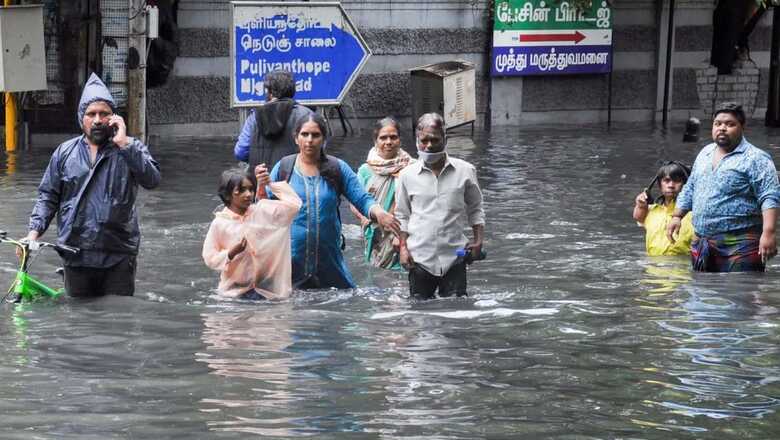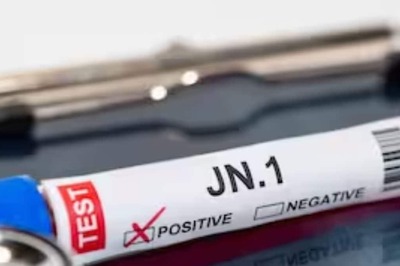
views
Six years after it was inundated by flash floods, Chennai once again finds itself partially submerged after heavy downpour. Authorities issued warnings and evacuated people from low-lying areas as local media showed footage of submerged cars, uprooted trees and people being rescued on rubber boats in various parts of the city.
The meteorological department has predicted that heavy rains will continue till November 12 due to low pressure created by a cyclonic circulation in the Bay of Bengal.
The harrowing scenes have once again prompted questions on why Chennai, often called ‘India’s Detroit’ due to its large car-making industry, finds itself neck-deep in flash floods so often.
The root of the problem is the damage caused to the natural drainage system by encroachments near lakes. These encroachments can be traced to couple of decades ago and even further back. With more buildings and high-rises being added to support the city’s burgeoning populating and growing IT parks, these encroachments grew into bustling neighbourhoods.
In fact, the names of many of these low-lying areas are suffixed with ‘eri’ or ‘aru’, the Tamil for ‘lake’ and ‘river’, respectively. Velachery, Vepery and Adyar are prime examples. Adyar, in fact, is believed to have derived its name from ‘addai’, the Tamil word for ‘clogged’. With more construction over the years in these areas, the infrastructural development failed to take ecological impact into calculation, cutting off natural drainage of rainwater into lakes and rivers.
Speaking to News18, Jayaram Venkatesan, convenor of citizens’ advocacy group Arappor Iyakkam, said, “Strong political will is needed to strengthen the infrastructure of Chennai and protect the city from floods in the future. Most importantly, it is the duty of the government to restore all waterbodies to their original or maximum capacity.”
EXPLAINED | Why Chennai Downpours Are Reviving Memories Of 2015 Floods
“First, the revenue department should mark the boundaries and learn about the encroachments in that particular boundary before restoration. Major encroachers are private real estate (entities). And secondly, the government itself has encroached several areas. Thus, these two encroachments should be dismantled,” he added.
Venkatesan further advised that before dismantling the encroachments, housing boards should be created to move poor populations within 3 km radius and not 30 or 40 km away. He said focus should also be on canals while restoring waterbodies. “This will help during extreme downpour as well extreme droughts by recharging ground water. The government should also focus on the missing link of storm water drains whose main purpose is to take the rainwater to nearby waterbodies,” he said, adding that the government must properly maintain and use 210 ponds that are currently under Chennai Corporation.
Venkatesan said these waterbodies should be restored to their original capacity to be used during summer months or in extreme drought.
“According to the government, concretizing is restoration, which is not factual. Subsequently, the encroachments that were made over 40 years ago cannot be reversed. Rather, the encroachments that were registered in last 10 years by bribing or without getting ‘patta‘ can easily be reversed. Moreover, FIR should be filed against the CMDA (Chennai Metropolitan Development Authority) and revenue department officials who indulged in ‘registration for bribes’ over the last 10 years. These actions will bring down corruption in registrations,” Venkatesan said.
Read all the Latest India News here




















Comments
0 comment